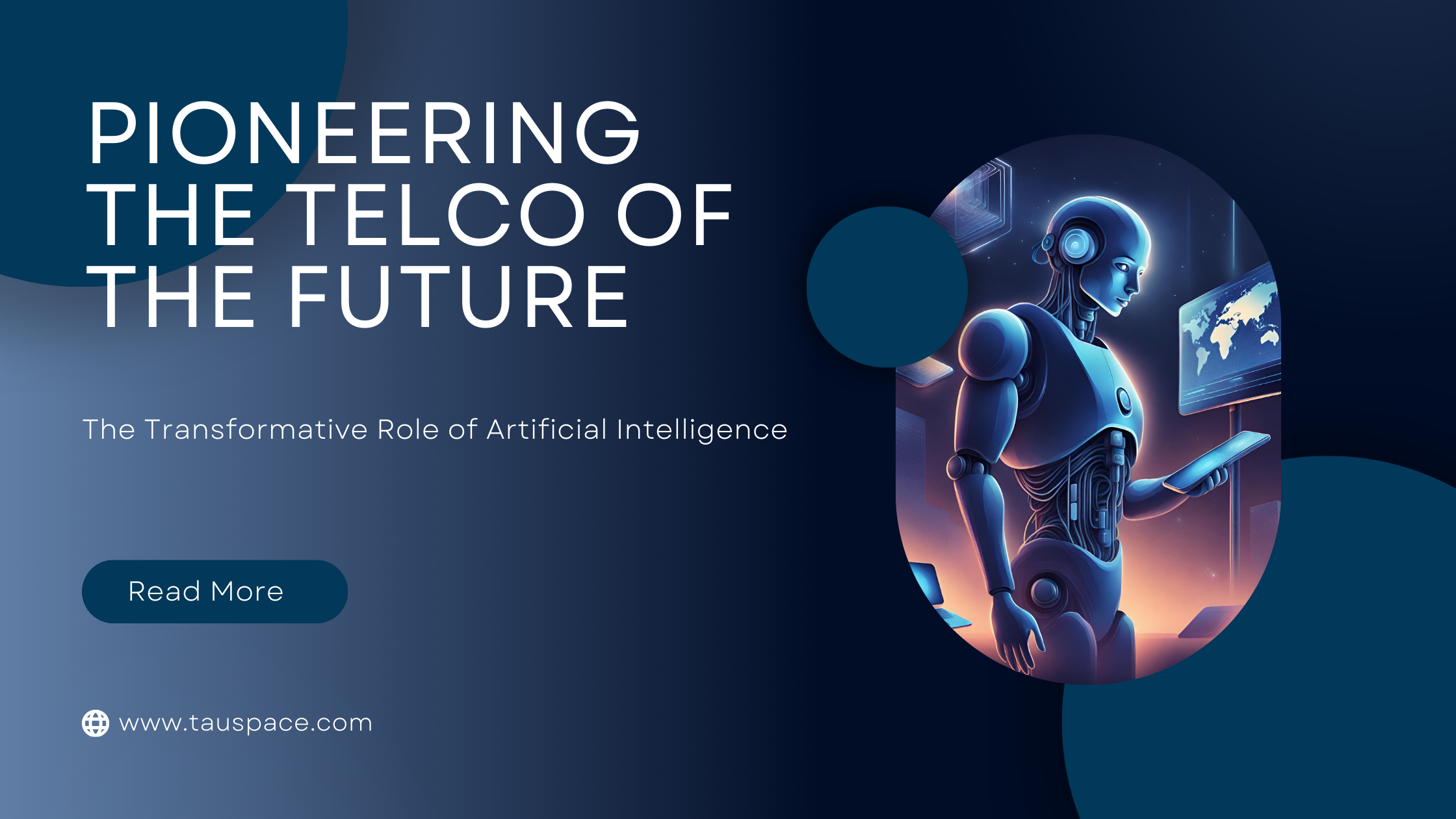In an era of rapid technological advancement, the telecommunications industry stands on the brink of a profound transformation powered by Artificial Intelligence (AI). As data volumes surge and customer expectations evolve, forward-thinking telcos are increasingly turning to AI as the catalyst for shaping the telco of the future. In this blog post, we will explore the myriad ways AI is poised to revolutionise telecommunications, exploring its applications and benefits, and strategic considerations for you as you navigate this transformative journey.
The Current State of AI
Before we dive into the future, let’s take stock of the present. The modern telecommunications landscape is characterised by the following:
- Rapid Technological Advancements: The transition from 2G to 5G networks has ushered in remarkable improvements in speed, latency, and connectivity.
- Data Explosion: With the proliferation of smartphones, IoT devices, and data-intensive applications, the volume of data generated and transmitted has grown exponentially.
- Complex Networks: Telecom networks have become increasingly multiplex, incorporating diverse technologies like mobile, fixed-line, satellite, and cloud-based services.
- Customer Expectations: Consumers and businesses demand seamless, high-quality connectivity, personalised services, and immediate issue resolution.
The AI Revolution
Amidst this backdrop, AI is emerging as a powerful catalyst for transformation. According to IBM[1], AI essentially represents a discipline that blends computer science with extensive datasets to facilitate problem-solving. It also encompasses subdomains like machine learning, deep learning, natural language processing, and computer vision, sometimes discussed in tandem with artificial intelligence. Within these areas, AI algorithms are employed to construct expert systems capable of making predictions or classifications using input data. Let’s explore how AI is set to shape the telco of the future:
The Role of AI in Telecommunications
- Network Optimisation and Management: AI algorithms can continuously analyse network performance, predict potential issues, and optimise resources in real-time. This proactive approach enhances network reliability, reduces downtime, and improves customer experiences.
- Predictive Maintenance: AI-driven predictive maintenance identifies network equipment that requires maintenance before failures occur. By minimising downtime, telecom companies can increase operational efficiency and reduce maintenance costs.
- Customer Experience Ehancement: AI enables personalised customer experiences by analysing user behavior and preferences. Chatbots, virtual assistants, and AI-driven recommendation engines can provide tailored services and support.
- Network Security: AI-powered cybersecurity solutions can detect and respond to threats in real time, fortifying telecom networks against cyberattacks and data breaches.
- AI can optimise network traffic by dynamically routing data to minimise latency and congestion. This is particularly crucial for 5G networks and emerging technologies like the Internet of Things (IoT).
Empowering Customer Service
- AI-powered Chatbots: Chatbots equipped with natural language processing (NLP) capabilities can efficiently handle customer queries, offer technical support, and even assist with billing inquiries 24/7.
- Virtual Assistants: Virtual assistants like Siri and Alexa are expanding into telecom services, enabling customers to manage their accounts and services using voice commands.
- Personalised Recommendations: AI algorithms analyze user data to offer more customised service recommendations, including tailored data plans and add-on services.
- Issue Resolution: AI can predict potential network issues before they affect customers and suggest solutions to technical problems.
- Enhanced Self-Service: AI-driven self-service portals empower customers to manage their accounts, resolve issues, and make changes to their services more conveniently.
Network Optimisation and Performance
- Predictive Maintenance: AI algorithms analyse network equipment data to predict when and where maintenance is needed, reducing downtime and improving network reliability.
- Dynamic Network Resource Allocation: AI optimises network resource allocation based on real-time demand, ensuring efficient bandwidth utilisation.
- Network Slicing: In 5G networks, AI can create network slices customised for specific services, ensuring the best quality of service for each application, from augmented reality to IoT.
- Energy Efficiency: AI can optimise energy consumption in telecom infrastructure, reducing operational costs and the industry’s environmental footprint.
The Future of Network Security
- Advanced Threat Detection: AI can analyse network traffic patterns to identify anomalies that indicate cyber threats, enabling rapid response and mitigation.
- Behavioural Analytics AI-driven behavioral analytics can detect unusual user behavior that may signal insider threats or compromised accounts.
- Zero-day Vulnerability Detection: AI can identify and patch vulnerabilities before they are exploited by attackers, enhancing network security.
- Automated Incident Response: AI can autonomously respond to security incidents, reducing response time and minimising damage.
Strategic Considerations for Telcos
Head of Strategy at TechSee, Jon Burg, correctly states that “AI has proven itself essential to the telecoms’ digital transformation strategy as it addresses the key challenges telecoms face today”[2]. And as we peer into the future, it’s evident that AI will play a pivotal role in further shaping the telecom industry. But, the AI-powered telco of the future must take note of the following:
- Data Privacy and Compliance: As AI relies on extensive data analysis, CTOs must ensure compliance with data privacy regulations like GDPR and CCPA. Implement strong data governance practices and transparent data usage policies.
- Ethical AI: AI decision-making should be transparent, fair, and free from biases. Establish ethical guidelines for AI usage within your organization.
- Investment in Talent: Build a team of AI experts to develop and maintain AI systems. Training and upskilling current employees may also be necessary.
- Data Quality: High-quality data is essential for AI algorithms to provide accurate insights. Invest in data quality assurance and data cleansing processes.
- Partnerships and Ecosystems: Collaborate with AI solution providers, startups, and industry consortia to stay at the forefront of AI advancements. Forming strategic alliances can provide access to cutting-edge AI technologies.
- Scalability: Ensure that your AI infrastructure is scalable to accommodate the growing volume of data and the increasing complexity of AI models.
Conclusion
Artificial Intelligence is poised to be the driving force behind the telecom industry’s transformation. From enhancing customer experiences to optimising network performance and bolstering security, AI offers a multitude of benefits that forward-thinking CTOs can harness.
[1] https://www.ibm.com/topics/artificial-intelligence [2] https://techsee.me/blog/artificial-intelligence-in-telecommunications-industry/









